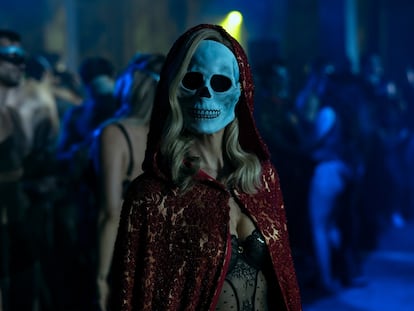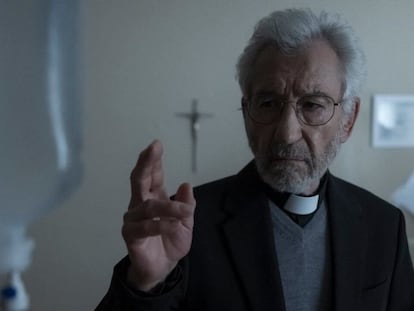Drugs meet aliens: 25 years after the release of ‘The Faculty,’ when the fever for teenage horror made the leap to science fiction
Received coldly at its premiere, the film, directed by Robert Rodriguez and written by the screenwriter of ‘Scream,’ has acquired cult status as a time capsule from the 1990s
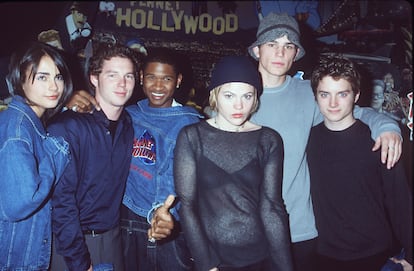
Few films take less time to contextualize themselves than The Faculty. It was released in the United States 25 years ago, on Christmas Day in 1998. Its opening seconds — with the song The Kids Aren’t Alright by The Offspring — clearly indicate the era of the production.
Two years earlier, Scream had inaugurated a successful commercial trend of teenage horror films. The slasher flick came out of Dimension Films, a division dedicated to the genre, within what was Harvey and Bob Weinstein’s studio, Miramax. In the same way that Scream was soon turned into a trilogy, the entire industry — in the months following the appearance of Wes Craven’s classic — would also give the green light to practically any project that included teenagers being filleted by murderers or supernatural creatures. If it bore the signature of screenwriter Kevin Williamson, even better.
In search of ways to exploit this concept, the studio recovered a draft discarded in the early 1990s, which proposed a variation of the plot of Invasion of the Body Snatchers (1978). In the script, aliens infiltrate a community by taking over residents’ bodies, but this time, the action is conveniently set in a high school. Two years after the success of Scream, Dimension Films recruited Williamson to put his touch on the final script. The role of director, meanwhile, was entrusted to Robert Rodriguez, who had just produced another terrifying movie about monsters hidden under human carcasses: From Dusk Till Dawn (1996).
“Look, you have to do this right now because these teen movies might be dead in a year!” the studio told Rodriguez. This is according to what the filmmaker said this past May, in an interview with Digital Trends on the occasion of the premiere of his film Hypnotic, a quarter-of-a-century after The Faculty.
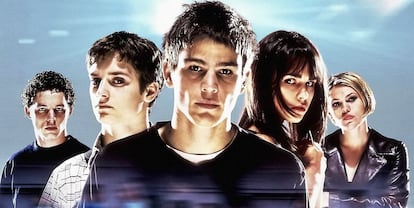
“I’ve never heard people talk so enthusiastically about The Faculty until the last couple of years,” the director confessed, in a sign of the renewed consideration towards a work that had a rather cold reception when it came out. With a holiday release scheduled to pack the same punch as Scream and Scream 2 (1997), the film did well at the U.S. box office, grossing $40 million, when it had only cost $15 million to make. But this profit wasn’t at all comparable to how lucrative the adventures of Ghostface had been.
A couple of years ago, one of the emerging actresses that made up The Faculty’s cast, Jordana Brewster, told Collider about the high expectations she had for the film: “I thought Fast & Furious (2001) would be a small movie about cars… a really fun summer project. With The Faculty, it was like, ‘you guys, this is gonna be huge.’”
With an advertising campaign supported by a collaboration with Tommy Hilfiger and a talented cast — which, in addition to Brewster, included figures such as Josh Harnett, Elijah Wood, Clea DuVall and the rapper Usher — the commercial disappointment was compounded by an unfavorable critical reception. In The New York Times, journalist Lawrence Van Gelder titled his review as follows: The Faculty: No Chance of Tenure.
Funnily enough, back in 2013, an MTV article read: The Faculty, 15 Years Later: Has Robert Rodriguez’s Teen Invasion Earned Tenure? The author — Vadim Rizov — highlighted how the purely temporary identity of the film ended up resulting in a time capsule from the 1990s.
The massacre of high school students in Columbine, Colorado, in April 1999 suddenly made teenage killings a taboo concept for studio executives. However, in his piece, Rizov stressed that the violence in The Faculty had more to do with the comic exaggerations of past productions — such as Rock ‘n’ Roll High School (1979) — than with more realistic horrors.
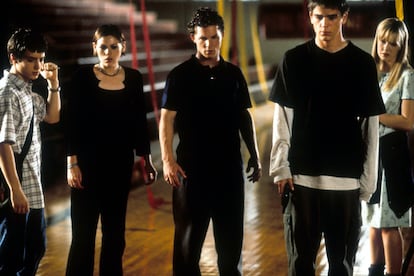
The system turns us into slaves
“[The Faculty stood apart from] Rodriguez’s filmography. For instance, he didn’t put his name on the script… something very rare for him, because he always wants to have absolute control of his films,” explains Noelia Gregorio Fernández in an interview with EL PAÍS. A professor of North American Studies at the University of Alcalá, on the outskirts of Madrid, she is the author of the book Una mirada al cine chicano: Robert Rodriguez en la era transnacional (or in English, A look at chicano cinema: Robert Rodriguez in the transnational era) published in 2020.
Dr. Gregorio relates The Faculty to other works by Rodriguez, such as From Dusk Till Dawn and Planet Terror (2007), “through the theme of the grotesque, the mixture of the beautiful and the ugly.”
“[These are some] of the constants of his cinema,” she continues. “Salma Hayek’s character in From Dusk Till Dawn is a paradigmatic example: an exuberant woman who suddenly becomes a vampire. In The Faculty, this happens by way of the actress Famke Janssen, who, with the monstrosity, also seems to lose her inhibitions.”
In her research, Gregorio reveals how Rodriguez managed to change Latino representation from the strict parameters of commercial Hollywood cinema, both in his stories and in the composition of his casts, well before the critical awareness of today. “Although The Faculty isn’t a film that makes a specific allusion to [Latin identity], by including two actresses like Jordana Brewster and Salma Hayek — of Brazilian and Mexican origin, respectively — without their characters being stereotyped was quite important for 1998,” she emphasizes. “Today, Jenna Ortega or Melissa Barrera come to mind, who’ve been the protagonists of the last two Scream films. But in the teenage horror genre of the 1990s, this wasn’t common at all.”
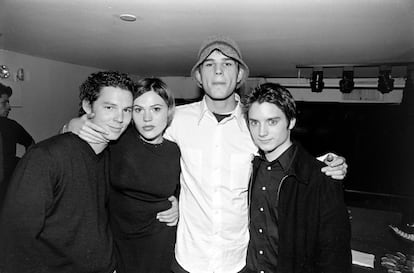
Defined by actress Clea DuVall as a cross between Invasion of the Body Snatchers and The Breakfast Club (1985), the story of The Faculty draws up an unlikely alliance between a group of teenagers with little to do with each other — a nerd, a secretly brilliant drug dealer, a journalist from the high school magazine, a former football player who disowns the team, a goth girl, and a new arrival — against aliens who have taken control of the teachers. With a lot of dark humor — as well as several tributes to The Thing (1982), by John Carpenter, including a parody of a scene where the protagonists must undergo a drug test to see who’s lying and who’s an alien — The Faculty stands as a practically quintessential film of the high school subgenre, with its praise of difference and its satire of the educational system. Throughout the plot, the school authorities literally seek to codify, homogenize and turn the majority of students “into slaves without brains.”
Although the young members of the cast wouldn’t achieve the leap to fame that they hoped for, their moment eventually came. Josh Harnett — who, in 1998, also starred in the horror film Halloween H20 — became a teen idol three years later, thanks to Pearl Harbor and Black Hawk Down. Jordana Brewster would find fame through Fast & Furious, the little car movie that she expected nothing from. She has since appeared in five more installments of the franchise, playing Mia Toretto, the sister of Vin Diesel’s character.
Clea DuVall would go on to carve out a solid career in independent film. Just one year after The Faculty, she appeared in the classic Girl, Interrupted and But I’m A Cheerleader, a film about conversion therapy. And, thanks to his cameo in the science fiction horror film, Elijah Wood would be informed that Peter Jackson was looking for actors with a profile similar to his for the casting of The Lord of the Rings…

Although the teenage horror bubble burst by the early-2000s, giving way to other movements (such as torture porn), nostalgia for that cinema has given new life to titles that many believed were not destined to have staying power. In addition to the progressive cult following that The Faculty has generated, the Scream saga also returned with renewed commercial muscle, with a seven installment most likely set to be released in 2024. The relevance of nostalgia for the horror hits of the 1990s is also exemplified by the fact that movies such as I Know What You Did Last Summer (1997) are dominating streaming platforms more than two decades after their original release.
As for Robert Rodriguez, the best commercial stage of his career came at the turn of the millennium. Currently integrated into the ecosystem of the Star Wars franchise, in recent years, the filmmaker has also filmed some sequels to his hits. These could soon be joined by a remake of The Faculty with the original cast, as he hinted in a recent interview.
Sign up for our weekly newsletter to get more English-language news coverage from EL PAÍS USA Edition
Tu suscripción se está usando en otro dispositivo
¿Quieres añadir otro usuario a tu suscripción?
Si continúas leyendo en este dispositivo, no se podrá leer en el otro.
FlechaTu suscripción se está usando en otro dispositivo y solo puedes acceder a EL PAÍS desde un dispositivo a la vez.
Si quieres compartir tu cuenta, cambia tu suscripción a la modalidad Premium, así podrás añadir otro usuario. Cada uno accederá con su propia cuenta de email, lo que os permitirá personalizar vuestra experiencia en EL PAÍS.
¿Tienes una suscripción de empresa? Accede aquí para contratar más cuentas.
En el caso de no saber quién está usando tu cuenta, te recomendamos cambiar tu contraseña aquí.
Si decides continuar compartiendo tu cuenta, este mensaje se mostrará en tu dispositivo y en el de la otra persona que está usando tu cuenta de forma indefinida, afectando a tu experiencia de lectura. Puedes consultar aquí los términos y condiciones de la suscripción digital.
More information
Últimas noticias
Welcome to the post-religion era: The idea of Christianity as the absolute truth has become obsolete
‘I thought you would like it’: The risky sexual practice popularized by TV shows and TikTok
The digitalization of tourism: ‘They promise experiences and gave us the worst possible one’
Mexican peso defies uncertainty with forecasts of a new period of stability in 2026
Most viewed
- Sinaloa Cartel war is taking its toll on Los Chapitos
- Reinhard Genzel, Nobel laureate in physics: ‘One-minute videos will never give you the truth’
- Oona Chaplin: ‘I told James Cameron that I was living in a treehouse and starting a permaculture project with a friend’
- Why the price of coffee has skyrocketed: from Brazilian plantations to specialty coffee houses
- Silver prices are going crazy: This is what’s fueling the rally

